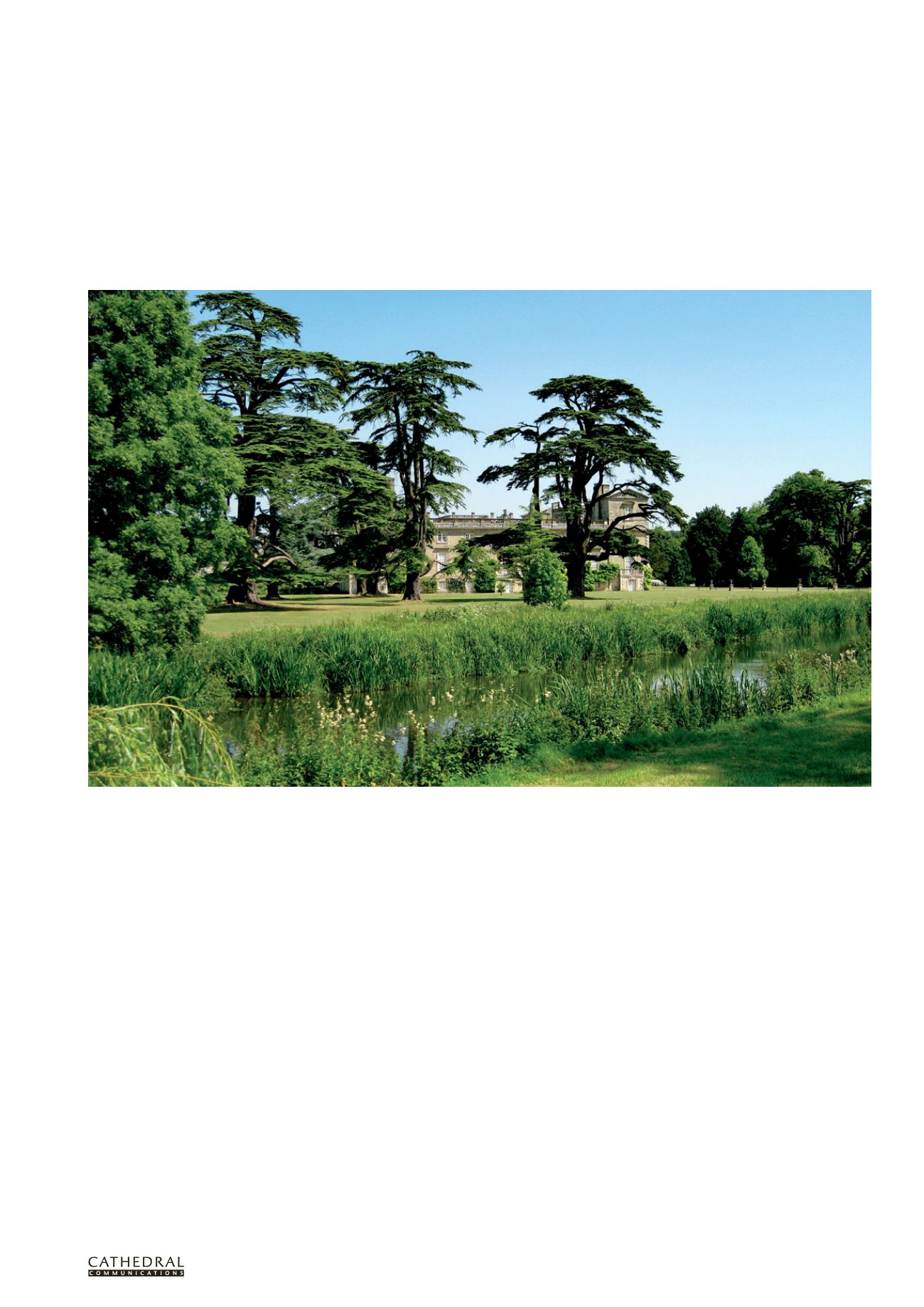
T W E N T Y F I R S T E D I T I O N
T H E B U I L D I N G C O N S E R VAT I O N D I R E C T O R Y 2 0 1 4
1 2 7
3.4
STRUCTURE & FABRIC :
EX TERNAL WORKS
TREES ANDTHE HISTORIC
ENVIRONMENT
SEBASTIAN WEST and ERIC HEATH
W
HETHER FORMING
an essential
part of the rural landscape through
forestry and agriculture, or providing
a dramatic vista within a designed park and
garden landscape, trees have long been valued
as part of the UK’s landscape.
Landscape design tastes have evolved
over time. Before the mid 18th century,
parks and gardens were very much in the
formal, architectural and geometric design.
For example, trees were laid out in strong
axial formal avenues radiating from the
principal house and feature points. It wasn’t
until the rise of landscape designer Lancelot
‘Capability’ Brown (1716–1783) that trees
became an essential instrument in producing
idealised sinuous and smooth views with the
use of tree clumps and belts among lakes,
ponds and rolling pasture. Brown’s idealised
landscape then gave way to the Picturesque
design movement in the late 18th century,
which appreciated the appeal of nature, the
rugged and the untamed. Ancient and veteran
trees� conformed to the aesthetics of the
fashionable gothic movement. Landscape
designer Humphry Repton (1752–1818) was
an advocate of the Picturesque style. In his
Observations on the Theory and Practice of
Landscape Gardening (1803) Repton recorded
that ‘The man of science and of taste will…
discover the beauties in a tree which the
others would condemn for its decay’.
During the Victorian period the more
formal Gardenesque landscape design
movement was introduced by Scottish author,
botanist and garden designer John Claudius
Loudon (1783-1843). This landscape design
style was subsequently adopted by many
public parks which encouraged the planting
of exotics and a range of interesting evergreen
specimen trees. The increasing popularity of
global travel among the wealthy meant that
exciting new species were planted and shown
off among fashionable society. Many of these
trees survive today in our parks and gardens.
During the early 20th century estates
began to be broken up and historic
parkland designs began to be eroded.
Forestry production also increased along
with clear-felling (the harvesting of all or
most of the trees in an area of woodland)
as part of the war effort. It was not
until after the Great Storm of 1987 that
people began to think increasingly about
repair and conservation of the historic
landscape and the trees within them.
Trees provide historic cultural connections
with people, events and places. They provide
a significant component in the history of the
British landscape, providing an aesthetic
value that cannot be underestimated. Trees
and their layout also help us to understand
parkland character and historic management
practices including use as medieval
hunting grounds, or for forming historic
hedgerows, pollards and coppice areas.
The English Heritage Register of Parks and
Gardens records those designed landscapes
which are nationally important and which
represent a material consideration for
local planning authorities in determining
planning applications. Similarly, there are
other ‘non-statutory’ registers which record
historic designed parks and gardens for
Scotland, Wales and Northern Ireland. Tree
Parkland at Wilton House near Salisbury, Wiltshire (All photos: LUC)


